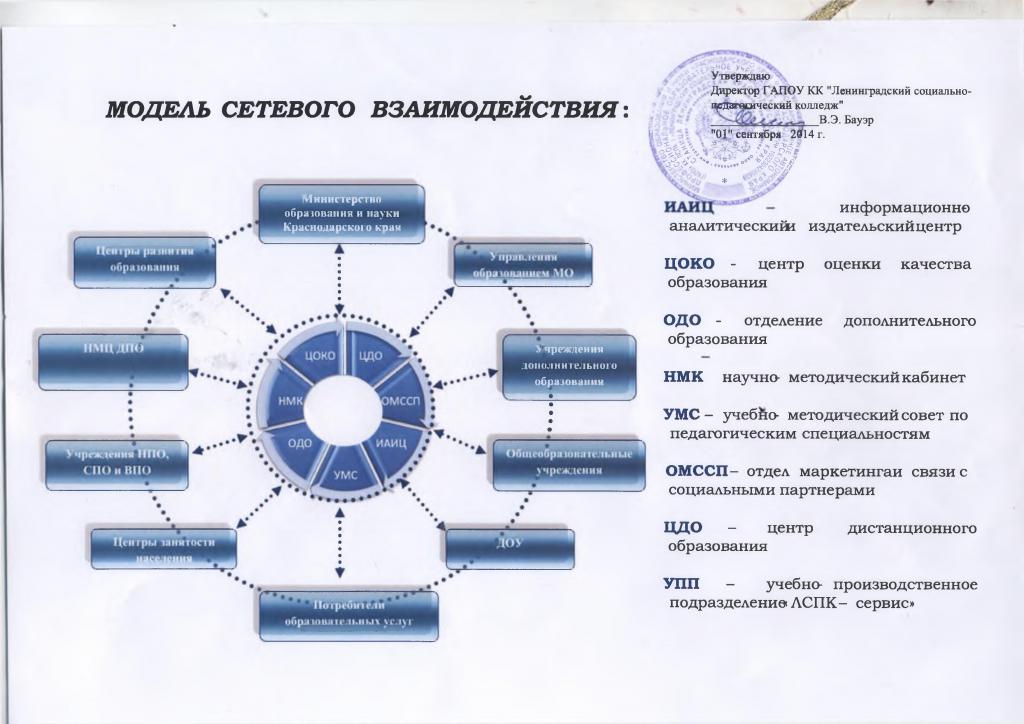The term, which is presented in the title, has many different uses. We will look at the network organization both in general and in private meanings. Based on this, we distinguish its features, the main areas where it can be relevant.
General definition
So, in the most general sense, a network organization is an institution that uses network relations, technologies, and communications in the management of business and production.
Thus, the form implies the legal independence of the firms that are networked. Their interaction is based on contracts. It wins other forms of organization due to the possession of a common resource base and a single information network.
Summarize. Networks are today's most flexible management structures that operate through a joint resource base. And the key in it will be precisely the information.

Network form of organization: advantages and disadvantages
An institution with a network structure is adaptive. Such an organization demonstrates one of the newest approaches to departmentalization. After all, the presence of a network structure indicates the trust of a wide range of its functions to independent contractors. The organization itself in this case acts as a small head center. Its main task is to control the activities of its counterparties.
We highlight the main advantages and disadvantages of a network organization.
| pros | Minuses |
| The ability to attract at a certain point in time only the resources necessary for that hour | There is no direct control of counterparty activities by the head office |
| Increased flexibility to respond to the ever-changing conditions of the surrounding business world | Based on the previous paragraph, there is a certain degree of uncertainty in the implementation of work tasks |
| A wide variety of work tasks | Unexpected breakdown of relations with a subcontractor can sometimes paralyze the activity of the whole system |
| Increased level of satisfaction with the results of their own work | Decrease in the level of loyalty of employees in the head office - their services can always be refused in favor of a third-party counterparty |
And now for the next thought.
Networking Goals
Let's announce the main goals of founding network organizations:
- Formation of a common resource base.
- Creation of a common informational “piggy bank” for the constant exchange of knowledge and experience.
- Distribution of risks between participants.
- Due to the synergistic network effect, it is planned to maximize total profit.

The stability of the created network is directly affected by the following factors:
- Trust between partners, the formation of an internal corporate culture.
- Both the availability and scrupulous implementation of internal standards of the organization by all participants.
- Coherence of partners.
- Sustainability of information links between them - for this a common network resource must constantly be replenished with new knowledge, observations.
Key Features
We list the key features of a network organization:
- The presence of market relations between the main links: from raw materials to the final stage of the sale of goods.
- The basis of the business relationship between the supplier, production, sales structures - contracts.
- The market has a great influence on the formation of supplier-producer, producer-seller interactions.
- Teams are formed within the organization whose task is to implement particularly significant projects.
- The manufacturer always selects the supplier with the most profitable goals, and that, in turn, is the factory, the contract with which is the most comfortable.
- In general terms, network organizations are characterized by autonomy, flexibility, adaptability, and a tendency to use innovations.
- There is a tendency to establish corporate relations between participants in the chain.

Territorial Network Organization (TCO)
To give an exhaustive definition, we turn to the Federal Law No. 35 "On the Electric Power Industry". Based on this act, network organization, energy can be interconnected.
We pass to the definition. Such is considered an institution that transfers electric energy, using at the same time those facilities of the electric grid economy that are not part of the all-Russian unified national network.
Only in certain cases permitted by Federal Law No. 35, does this organization have the right to use facilities (or some part of them) included in the unified Russian power grid to provide its services.
Let's see what form, according to Russian laws, can be considered an electric grid organization.

What can be called TCO?
According to the Decree of the Russian government No. 184, adopted in 2015, a TCO can be considered an organization that immediately meets all the criteria listed below:
- It has a number of power transformers whose total power exceeds 10 MVA.
- Has overhead or cable power transmission lines of 2 or more voltage levels:
- High (110 kV and more). First medium (35 kV or more). The second medium (1-20 kV). Low (less than 1 kV).
- The absence of three facts of applying price adjustments and / or reducing factors.
- It has a dedicated subscriber phone number for customer inquiries regarding questions about the transfer of electric energy and technological services.
- Has its official website.

Network connectivity
Let's move on to networking organizations. These are closely cooperating educational institutions that have united for the common use by students of cultural, educational, scientific, and sports resources.
The objectives of this form of implementation of educational programs are as follows:
- General improvement in the quality of education.
- Expanding the area of students' access to modern teaching aids, technologies.
- Providing the opportunity to choose from a wider range of training profiles.
- In-depth study of interesting specializations, courses.
- Improving your professional competence through the experience of colleagues.
- Effective use of educational shared resources.
- Improving the competitiveness of graduation courses in both the Russian and international labor markets.
Network Education Regulation
The activities of networked educational organizations are regulated by Federal Law No. 273 "On Education in the Russian Federation." It was last revised in December 2017. According to this act, the network are institutions that provide their students with the development of programs based on the resources of several educational organizations. The latter may also include scientific, physical-sports, medical, industrial and other centers where it is possible to conduct training, practice for students (educational and industrial) and carry out other activities useful for the assimilation of knowledge.

The network form of interaction between educational institutions, according to the Federal Law No. 273, is carried out on the basis of an agreement. Also, these organizations should draw up a general educational program.
As for the agreement between them, it must necessarily include the following:
- The direction, type and level of the general educational program.
- The status of students in educational network organizations, the rules for admission to these universities, colleges, information about the organization of academic mobility of students.
- The procedure and conditions for the implementation of training under the general program: the distribution of responsibilities between educational institutions, the amount and nature of shared resources.
- Information about the document on education (qualification), which will be issued to the student upon completion of mastering his course in a network educational organization.
- Terms of relevance of this contract. Conditions for changing its conditions or termination.
Network model of data organization
In conclusion, consider network data organization. This is the name of the logical model of the latter, which is an extension of the hierarchical approach (the database is presented in the form of a multi-level tree). This is a rigorous mathematical theory of data processing in their network databases.
There is a key difference between hierarchical and network data organization - in the first case, the child record has only one ancestor, and in the second (network), any number of ancestors. Thus, a network database consists of a set of instances of a certain type of record and a set of instances of a certain type of relationship between these records.

The advantage of such a model can be considered as having the possibility of quite effective implementation in terms of efficiency and memory costs. Cons - tangible rigidity and complexity of network database schemes. A disadvantage is also observed: to change the data structure, you need to change the application itself.
Based on the network model of data organization, a network DBMS (database management system) was built. Its basic terms are considered an element (node), connection and level.
Thus, we have analyzed the general definition of a network organization. This is one of the new and effective forms of doing business with its own characteristics, goals, pluses and minuses. Topical today are TCO in the electric power industry, educational institutions of network interaction. In addition, this form is typical for the organization of data models.
